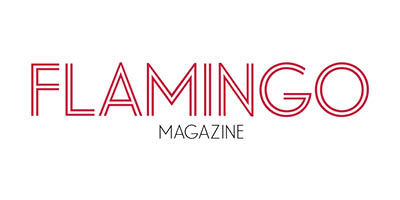Over the past 30 years, resumes and the hiring process, in general, haven’t changed that much. That is up until the last few years where we’ve seen an emerging relationship between tech, AI, and human resources. It may seem counter-intuitive to manage a human-centered process with tech and AI, but when done with a human-forward approach, it can make finding a job faster and easier for candidates, and more efficient and economical for companies.
And since the recruiting process has taken a turn for technological, our resumes need to adapt. For starters, download our favorite resume template and then customize it for your own job search.
Also on Mediabistro


Since we spend a lot of our time reviewing resumes in order to match candidates to great jobs, we’ve come up with a list of some of the most important aspects to think about when writing your 2021 resume. We often get on the phone with candidates and ask them to tweak some of these resume mistakes and see them go on to land amazing jobs.
Are you making any of the mistakes listed below? Read on to find out!
List accomplishments instead of duties
Copying and pasting your previous job descriptions on your resume isn’t going to do you any favors. Nothing about that helps you to stand out and it also doesn’t tell employers what you accomplished while on the job.
Instead, try thinking of the differences you made while working at your previous job. Did you streamline any processes, take on big projects, or manage a team? Write about it!
Include strong data, numbers, and performance indicators where appropriate
Going off of our last point, it’s a great idea to keep a list of personal metrics on hand to include within your resume later. Say you grew the revenue your team generated by 20% last year, that’s impressive – include it! Maybe you created 15 new processes that streamlined business functions – add it!
What we’re saying here is that numbers stand out. They tell future employers exactly what you accomplished in the past and what you can potentially do for them in the future. So, if you can include your own personal metrics on your resume, do it!
Tailor your resume to the job description
Most people don’t just apply to jobs with a singular job title. Say you’re coming from an account management role and would be happy to land a new job in account management, but you’d also be open to roles in project management. While your experience hasn’t changed, your resume typically should (unless you’re applying from Scouted where we tell employers why you’d be a great fit for either role).
The thing is, if someone who’s hiring for a project management role reads a resume who seems like they’re actually looking for an account management role, that’s an easy way to get filtered out of a resume pile. Instead, do your best to tailor your resume to the job you’re applying for. Take a deep look at the job description to see how it would work within your resume.
Also read: How to Edit Your Resume Based on the Job You’re Applying For
Keep your resume to one page
The rule of thumb here at Scouted is that if you have less than 10 years of experience, keep your resume to one page. In fact, we’ve seen employers automatically turn down people with less than 10 years of experience with over 1 page resumes.
Even if you feel like you have a lot of information you want an employer to know about you (much) more often than not, a resume that’s over 1 page simply seems to ramble about things that aren’t particularly relevant to the job you’re applying for.
Instead, as we stated above, tailor your resume to the job you’re applying to and if some of your previous experience isn’t relevant, think about either leaving it off or cutting down that section to make more room for your experience that is relevant.
Founder tip: The space you allocate on your resume should be proportionate to your time spent at a job. Think – more real estate for places you were at for a longer time, gained the most experience, etc.
Avoid an irrelevant “skills” section
This is often one of the unimportant sections that make a resume longer than it should. In this day and age, most employers will assume that you know basic computer functions, so feel free to leave Microsoft Excel off your resume. And, you may have great leadership skills, but if you’ve mentioned how you’ve lead teams and made a difference in your workplace in the experience section above, a hiring manager will gather that themselves rather than taking your word for it in the “Skills” section of your resume.
When should you have a skills section on a resume?
We typically tell candidates that special certificates and training can be mentioned in the “Skills” section. If that’s not you, better just leave it off. However, a “Skills” section can actually be really important for technical resumes to show the languages/programs you know and can also be useful if you’re concerned about being picked up by ATS (applicant tracking systems).
The main idea here is that you want to include programs/products/skills that are unique and make you stand out versus simply saying you know how to use email and write in Word.
Incorporate keywords based on the job description and industry
The way an ATS determines if your resume is a good match for the job is by scanning the text for relevant keywords. Keywords usually refer to a specific skill (“Javascript”), educational background (“journalism”), or previous position (“marketing manager”). You can get a good sense of what the keywords for the job are by looking at the job description. Note what the employer is asking for in the “Qualifications” section and see what’s on the list of job responsibilities. From there, you can adapt your resume to incorporate the words and phrases that appear frequently.
However, don’t “stuff” your resume with keywords. Using them once — or twice, if it’s an essential part of the job — will suffice. In addition, if you use industry-related acronyms in your resume, the ATS might only be calibrated to pick up on the full spelling of the word or phrase. It’s best practice to include both (such as “UX Designer” and “User-Experience Designer”).
Keep the format simple
You might think that using graphics or a colorful design for your resume would put you ahead of the pack. And that’s possible if a hiring manager is reviewing the resume, but your plan could backfire if it has to go through an ATS first. Research from TopResume found that 21% of resumes include graphics or charts that an ATS cannot read. Instead, keep your resume to one or two simple sheets of white paper and choose a basic font like Times New Roman or Helvetica–no frills needed. If you’re not sure how to format it properly, you can try Scouted’s recommended resume template.
Tell a clear story of your career path, even if it’s non-linear
What many job seekers don’t realize is that hiring managers read resumes to get a clear picture of a candidate’s career path. They want to know why you want the job.
So, before submitting your resume to job boards, read over it to see if your career path makes sense. Have a friend do the same. See if it makes sense to them that you’re applying for the roles you’re applying to. If it doesn’t make sense, I try mirroring some of the language in the job descriptions you’re applying to. Ask yourself how your experience would make you great at those jobs. If you’re able to communicate that, that your resume will make much more sense.
Pro tip: Always save your resume as a PDF.
You’ll notice that our resume template is a Microsoft Word file. Whatever template you use, don’t leave it in an editable format. You never know how your resume formatting may show up on another’s computer so it’s best to play it safe and always save your resume as a PDF.
Pro tip: Do the 10-second test
It’ll take about 10 seconds for a hiring manager to make an initial decision on your resume. After you’ve finished writing yours, walk away from it for an hour or two. When you return, try to skim it in about 10 seconds. See what you take from your resume and ask yourself if your relevant experience and expertise is clear. Once you do this, try having a friend do the same thing and see what they take from your resume as well. Edit as needed and then send it on its way!
To have or not to have a skills section on a resume…
We typically tell candidates that special certificates and training can be mentioned in the “Skills” section. If that’s not you, better just leave it off and use the space for something more useful.
That being said, a “Skills” section can be really important for technical resumes to show the languages and programs you know and can also be useful if you’re concerned about being picked up by ATS (applicant tracking systems).
The main idea here is that you want to include programs/products/skills that are unique and make you stand out versus simply saying you know how to use Microsoft Office.
These are most of the biggies but, of course, if you have other questions we at Scouted offer personalized resume advice! But for starters, try using our preferred resume template and go from there!
We’d love to hear your thoughts and questions in the comments below and we’ll do our best to respond to each!









